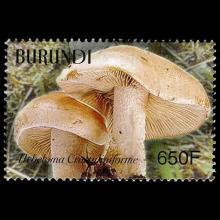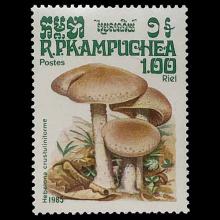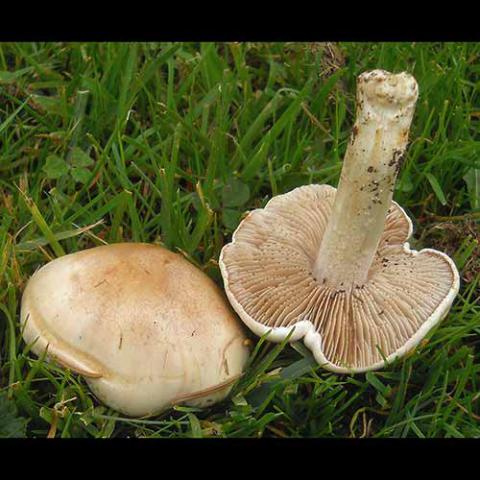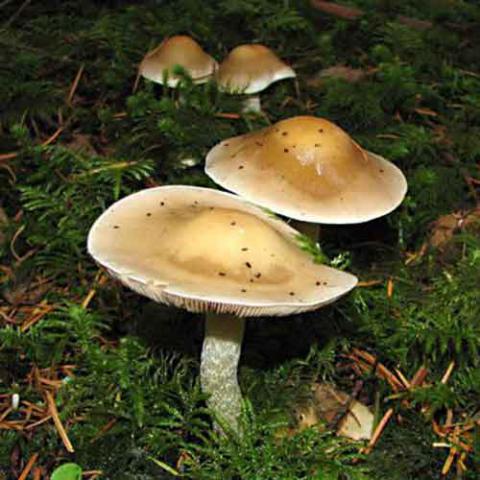NAMES
TAXONOMY
FUNGI ID
THERAPEUTIC
Burundi
Issued:
Stamp:
Hebeloma crustuliniforme
Cambodia
Issued:
Stamp:
Hebeloma crustuliniforme
Burundi
Issued:
Stamp:
Hebeloma crustuliniforme
Cambodia
Issued:
Stamp:
Hebeloma crustuliniforme
Burundi
Issued:
Stamp:
Hebeloma crustuliniforme
Cambodia
Issued:
Stamp:
Hebeloma crustuliniforme
Poison Pies : Hebeloma crustuliniforme group
Commonly known as “Poisonous Pie”, this species is aptly named as this mushroom looks appealing - at least to me. Smelling like and tasting like radishes, and reminiscent of biscuit dough, this species can cause severe gastrointestinal distress, so the proximity to a bathroom is essential for the enduring the grueling few hours of diarrhetic discomfort. If any mushroom “looks edible”, this is it – but “looks” in mushrooms are deceiving, cloaking toxicology.
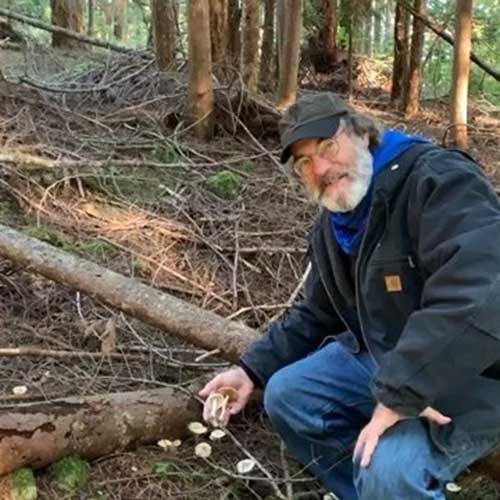
There is no general rule for knowing which mushroom species is edible or not. You must known them individually.
This dull brown spored mushroom is a mycorrhizal species with both conifers and deciduous trees. Hebeloma crustuliniforme grows typically individually but usually scattered in groups. Reported from North America, Europe and more recently from Australia, this species is probably more widely spread than presently known.
What always draws my attention is the upper regions of the stems: they are adorned with patches of fibrils. When I teach classes on mushroom identification, this is in my top ten of the best poisonous mushrooms - meaning you should know this mushroom, respect it and leave it alone to do its work in the ecosystem. What is toxic to humans can be beneficial to trees. I struggle with assigning purpose of some mushrooms’ toxins - they simply may be happenstance. Or they may serve a function humans have yet to decipher.
Nevertheless, don’t eat this species. Please..... But have fun studying it! I have always been attracted to that which has been mysterious but potent. This is one example of many.
Reference: Paul Stamets
Genus species (Fungi): Hebeloma crustuliniforme
Hebeloma crustuliniforme, commonly known as poison pie or fairy cakes, is a gilled mushroom of the genus Hebeloma found in Europe and North America, and has been introduced into Australia. Its specific name derives from the Latin crustulum or little biscuit. It is moderately poisonous.
Description
The buff to pale tan cap is 4–10 cm in diameter, convex then umbonate with an inrolled cap margin until old. The gills are pale grey-brown, with orange to brown spores and exude droplets in moist conditions. The stipe is 4–7 cm high and bears no ring, while the thick flesh is white. The fungus has a radish-like smell and bitter taste.
Distribution and habitat
A common mushroom, Hebeloma crustuliniforme can be found in open woodland and heathland in summer and autumn, though may extend through winter in places with milder winters such as California. Toxicity[edit] This fungus is poisonous, the symptoms being those of a severe gastrointestinal nature, namely vomiting, diarrhea and colicky abdominal pain several hours after consumption. The toxic agents have not been identified.

